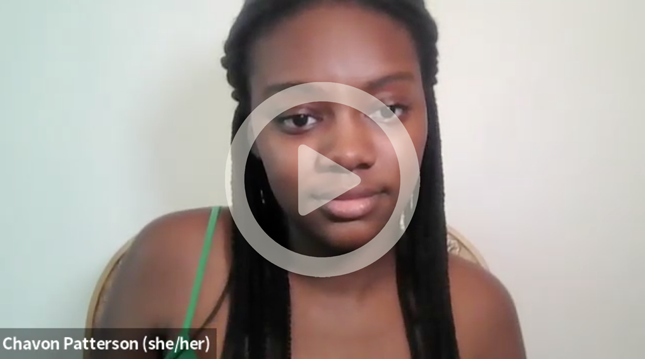[Video] Parable of the Zoomer: Investigating Octavia Butler Using Modern Technology
Theatrical adaptations of literary source material allow artists and audiences to reconsider the relevance of period texts in our contemporary world. In adapting and directing this passage from Parable of the Sower as a Zoom play, I worked with actors Chavon Patterson ’24 and Gigi Brown ’24 to examine the resonance of this 20th Century work today.
As theater and film artists often do when considering a period text, we sought to discover how modern technology could make the text resonate anew. The medium of Zoom prompted a fascinating question: what would it be like to live in a world like Parable of the Sower, but with the addition of the screen-based technology we now rely upon?
Parable of the Sower paints a hauntingly accurate picture of our present world. Octavia Butler’s descriptions of the ubiquity of wildfires, the proliferation of gun violence, and the stagnation caused by political gridlock read less like forecasting and more like contemporary depiction. But like many other 20th century prognosticators, Butler did not foresee the proliferation of portable, constantly present screens in our society.
In superimposing the new element of screens and Zoom unto this world, we discovered that the prophesies of the novel rang even truer and pointed us towards a greater understanding of the characters. For example, how better could the adults in Lauren’s life protect her from the world than by keeping her inside and limiting her engagement with others to screen time?
The observations that the girls have in conversation also took on modern relevance when they are sequestered inside, far away from each other. When Joanne observes that “Your father says he doesn’t believe people changed the climate in spite of what scientists say” (57), it takes on new meaning when we imagine that the two girls have been forced inside by the ravages of climate change.
This juxtaposition of brazen denial in the face of lived catastrophes reminds us of climate-change deniers who are trapped inside pontificating on social media because it is not safe to go outside into hurricanes and wild-fires. Joanne’s line “My mother is hoping this new guy, President Donner, will start to get us back to normal” (54), takes on a new resonance when we imagine the two girls stuck inside, unable to be physically close to each other, such as many voters were during the 2020 election as they echoed similar sentiments on google hangouts.
By mashing up the genres of novel, play, and film, and filtering this mash-up through our current technology, we found new meaning in the novel, seen through a contemporary lens.
